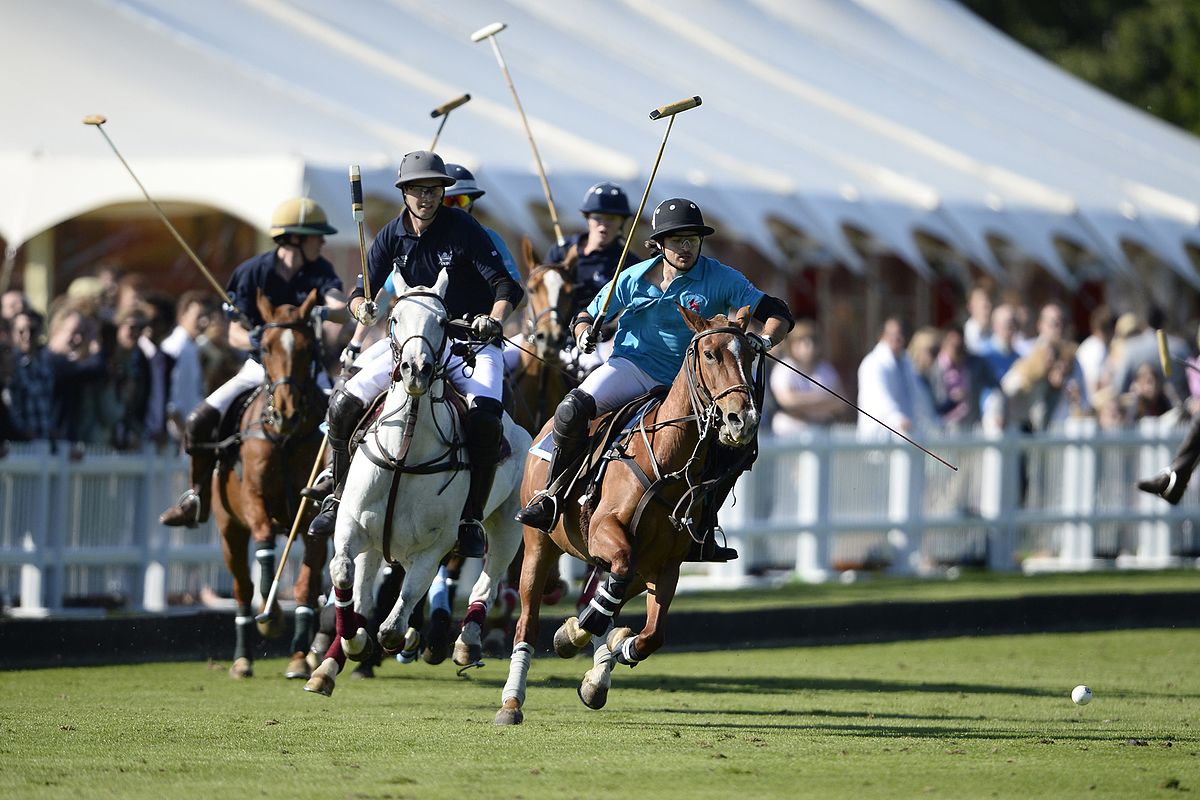Rules of Polo (In Preparation for Saturday)

Here at Joyce Guiness we are getting very excited about Saturday. The first Langman Cup is being held in honour of Roy Langman at Epsom Polo Club. In anticipation for Saturday, we thought that we would give you the rules of polo for you to mull over. For more information on the day visit our previous blog post: https://dev.joyceguiness.co.uk/langman-cup-2017/
So… What do you need to know about polo?
The objective of the game is to hit the ball down the field and score as many goals as you can. After a goal is scored the teams switch side. There are four chukkas (periods of play) in a match and each one lasts seven minutes.
A Polo Ground is 300 yards long by 200 yards wide although if it is boarded it need only be 160 yards wide. The goalposts, open at the top, are 8 yards apart.
Play starts with the umpire throwing in the ball between the two teams lined up in front of him. In the same way play is restarted after a goal is scored or if the ball goes out over the side boards. If the ball goes over the back line there is a hit-in by the defenders. There is no offside in polo nor is there a corner, instead a 60 yd hit from the back line is taken by the attacking side opposite where the ball went out of play.
Two mounted umpires control the game. After they have blown their whistle for an offence they often consult each other on the severity of the foul. Should they disagree they can seek the opinion of the referee or ‘third man’ as he is often known in the stands.
The main rule in polo is that the player on the line of the ball, has the right of way and may only be challenged by being ridden off, or having his stick hooked. A player riding along the line of the ball in the opposite direction may, if it is not dangerous, hit the ball provided it is the corresponding forehand or backhand as the original player. This rule can generally be compared with a dual carriageway with the central reservation being the line of the ball. There are strict rules covering the entry into that right of way and the severity of any infringement governs the severity of the penalty awarded.
The penalties depend on the severity of the offence. The penalties are as follows:
- Penalty No 1 – Automatic goal
- Penalty No 2 – 30 yd hit to an open goal
- Penalty No 3 – 40 yd hit to an open goal
- Penalty No 4 – 60 yd hit to a defended goal
- Penalty No 5 – A hit from the spot where the foul was committed
- Penalty No 5B – A hit from the centre of the ground. This is used when the defending team are attacking from their own half.
The team that scores the most goals wins!
Now that you know all about the polo match, why not come and see it in action on Saturday at 12:00pm?!
(Credit to http://www.playpolo.co.uk/polo-facts/basic-rules/ for the rules)

